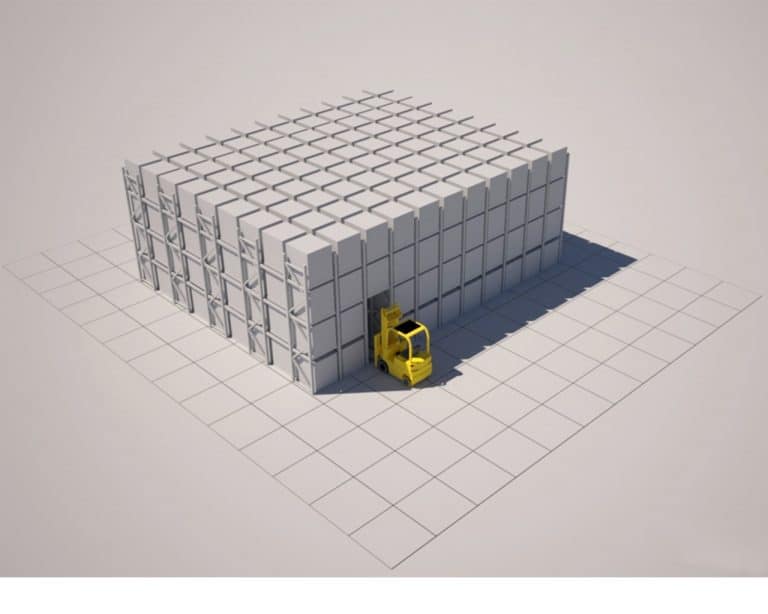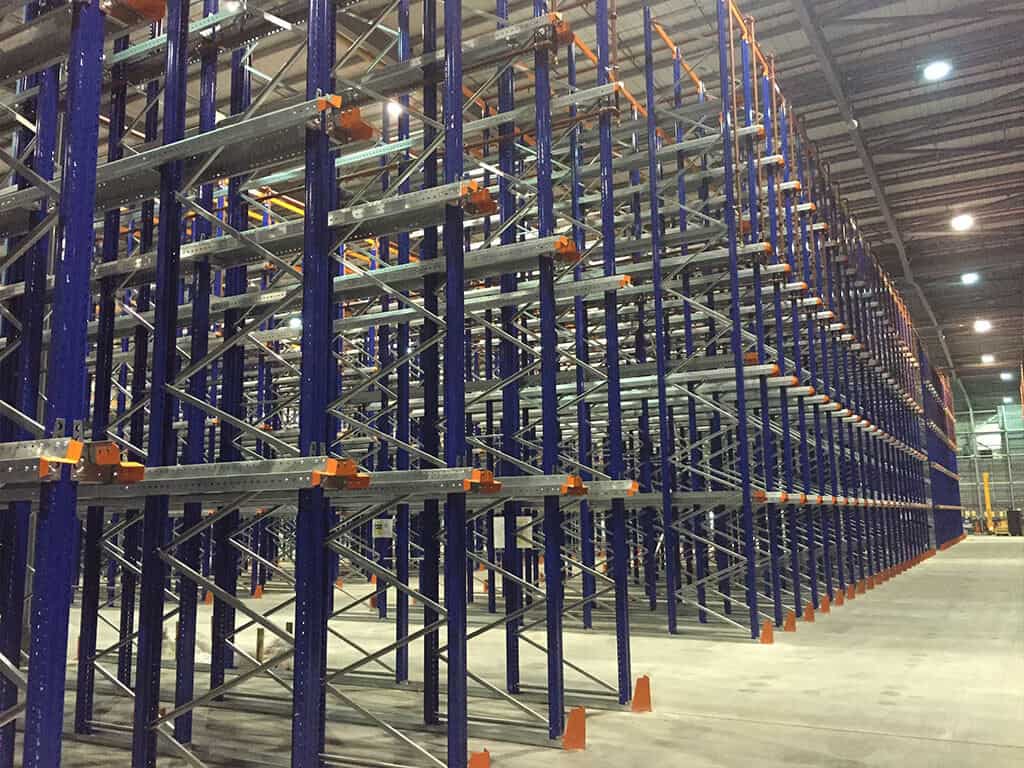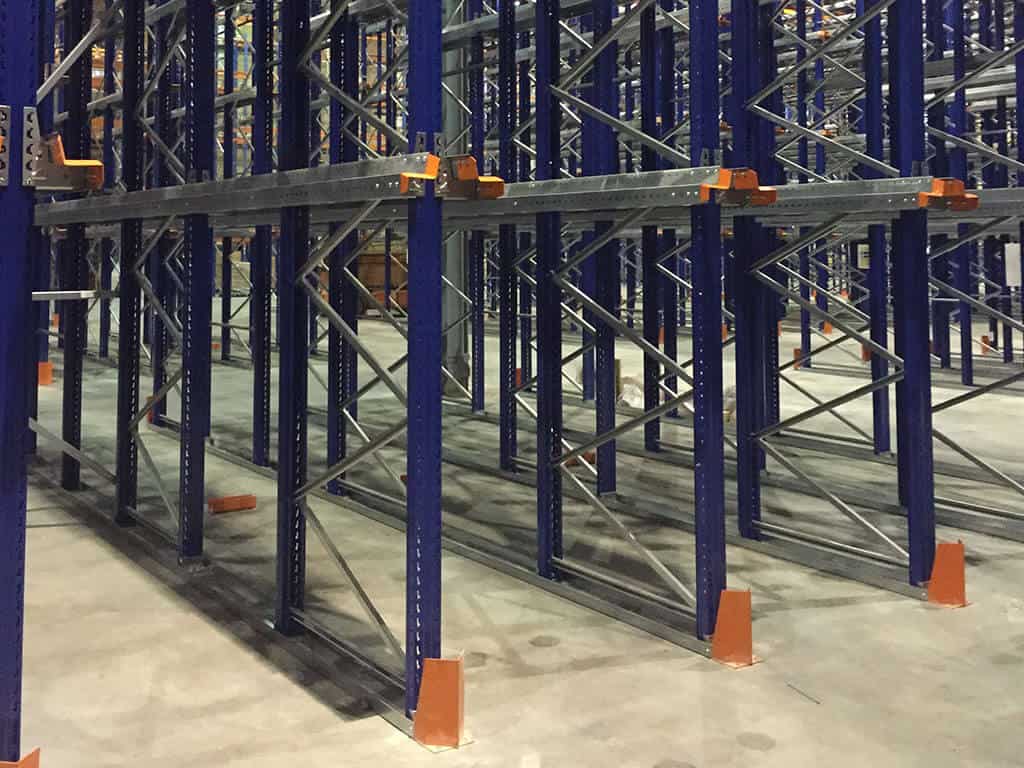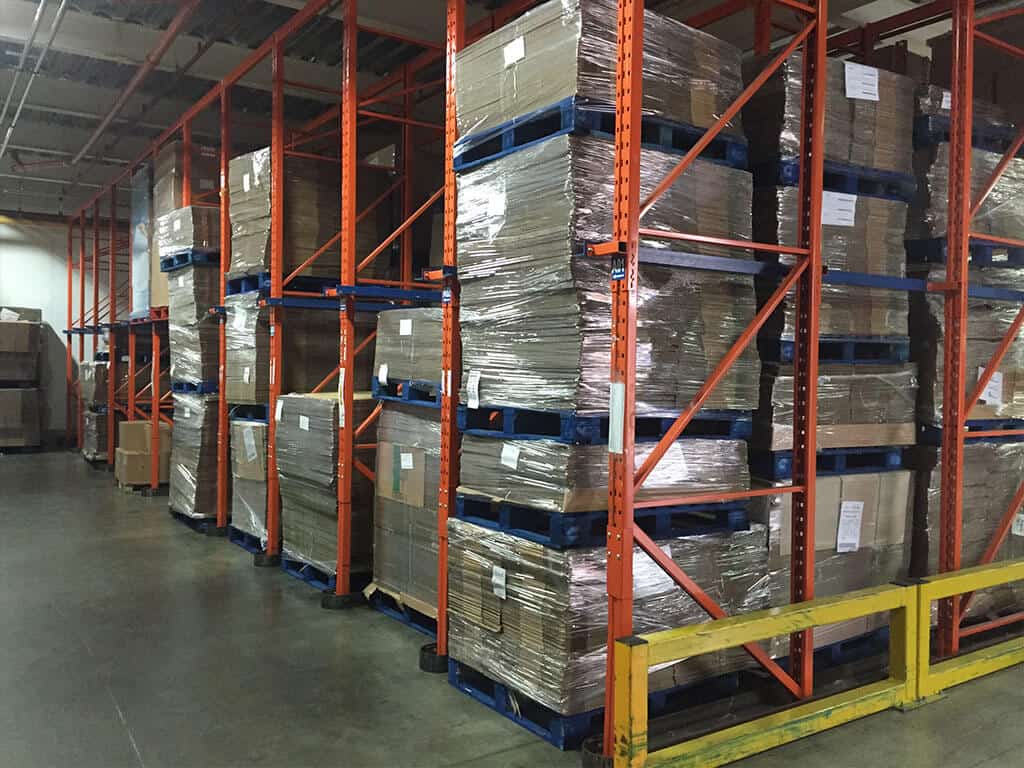Space utilisation is increased up to 85% by assembling the pallets in a solid unit and eliminating lanes and aisles from the rack structure.
Pallets are stored on rails and access can be from one end – the ‘drive-in’ configuration that means the system operates on a first in, last out (FILO) basis – or from both ends as a ‘drive-through’, so a first in, first out (FIFO) stock rotation system can be used.
Although relatively slow for retrieval, drive-in and drive-through racking both offer a significantly lower risk of damage to pallets than block stacking, while being almost as high density.
Each pallet is still supported individually, so damage from crushing is minimised.
Costs can be kept to a minimum by using standard forklifts, which can be used efficiently driving in and out of the lanes to pick and place palletised goods. Individual pallets are not accessed directly, but one-by-one from the front of the rack.




